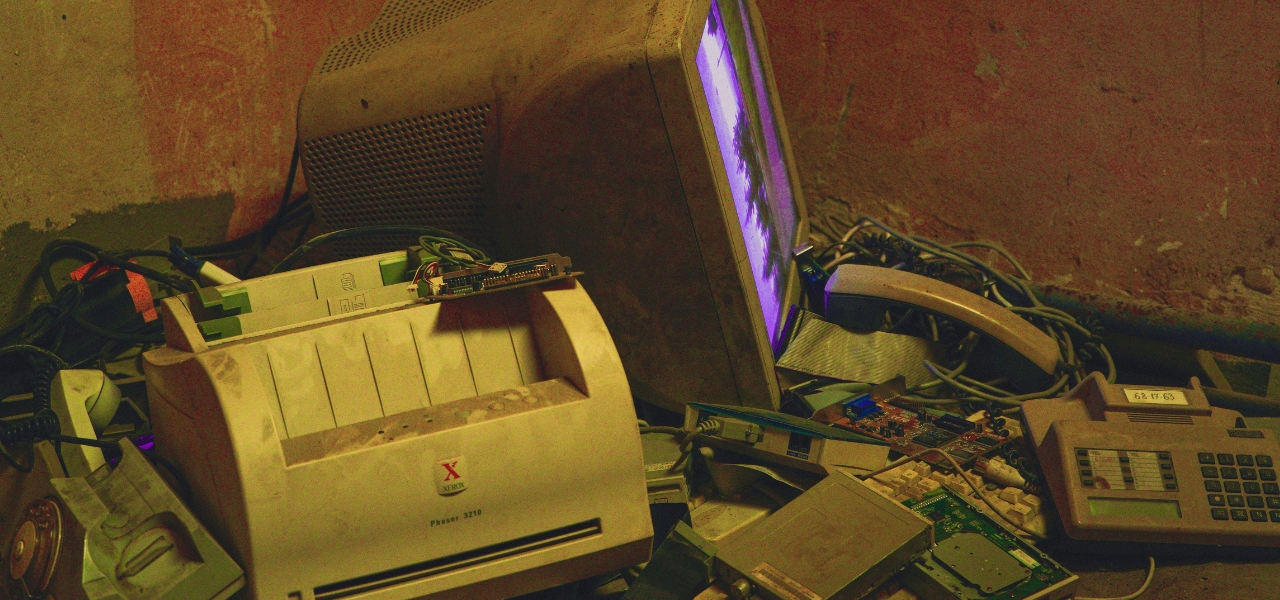Electronic devices play a crucial role in both our personal and professional lives. From smartphones and wearables to laptops and home gadgets, our dependence on electronics is unmistakable. Nonetheless, this frequent use of technology has resulted in a significant issue: electronic waste, commonly known as e-waste. According to the United Nations, e-waste is the waste stream that is growing the fastest worldwide, with approximately 50 million metric tons produced annually. This increasing concern presents a serious risk to our environment, as thrown-away electronics frequently contain toxic substances such as mercury, lead, and cadmium, which can seep into the soil and waterways, leading to lasting ecological harm.
In light of this, many individuals are exploring biodegradable electronics as a possible remedy. But do biodegradable electronics genuinely provide a solution to the global e-waste problem?
The Growing Problem of E-Waste
Before delving into biodegradable electronics, it’s crucial to understand the severity of the e-waste issue. E-waste not only harms the environment but also poses serious health risks to humans. Many of the metals and chemicals in electronic devices are toxic, and improper disposal—such as burning or dumping them in landfills—releases these substances into the air and water. Recycling efforts have been insufficient to keep pace with the growing volume of e-waste. According to the Global E-Waste Monitor, only 17.4% of global e-waste was recycled in 2019, leaving the remaining 82.6% to either be discarded or left in storage.
The sheer scale of this issue calls for innovative solutions, which is where biodegradable electronics come in. These devices are designed to break down naturally after use, reducing the environmental burden of disposal. But are they truly the answer we’ve been waiting for?
What Are Biodegradable Electronics?
Biodegradable electronics, also known as “green electronics,” are electronic devices made from materials that can decompose in a natural environment. These devices are designed to function just like traditional electronics, but with a key difference: they are made with environmentally friendly materials, such as biodegradable polymers, organic semiconductors, and natural fibers, that can break down when discarded. The goal is to eliminate the toxic waste produced by non-biodegradable electronics, ultimately reducing the strain on landfills and incineration facilities.
This innovative technology has the potential to revolutionize the way we handle e-waste. For instance, researchers have been developing biodegradable circuit boards, transistors, and batteries that can perform similarly to their non-biodegradable counterparts. These materials decompose under the right conditions, avoiding the long-term environmental damage caused by traditional electronics.
The Potential of Biodegradable Electronics in E-Waste Management
Biodegradable electronics offer several key benefits that could help mitigate the global e-waste crisis. First, they would reduce the environmental impact of electronic devices at the end of their life cycle. Since biodegradable electronics are designed to break down naturally, they would help eliminate the need for expensive and often ineffective recycling processes. As a result, there would be less need for landfills and incineration facilities to manage e-waste.
Second, these devices could help alleviate the burden on global supply chains. Many of the materials used in traditional electronics, such as rare earth metals and heavy metals, are often extracted through environmentally damaging practices. The use of biodegradable materials in electronics would reduce the need for mining and the associated environmental harm. Additionally, biodegradable electronics could be designed with sustainability in mind, using renewable resources and energy-efficient manufacturing processes.
Finally, biodegradable electronics have the potential to drive innovation in other industries. As companies explore new materials and manufacturing techniques for biodegradable devices, these innovations could lead to breakthroughs in other sectors, such as agriculture, packaging, and medical technology.
Challenges and Limitations of Biodegradable Electronics
While biodegradable electronics hold promise, they are not without their challenges. The technology is still in its early stages, and many biodegradable materials currently available are not as durable or efficient as traditional materials. For instance, biodegradable batteries, which are essential for powering these devices, have not yet reached the performance levels needed for mainstream adoption. Researchers are working to improve the efficiency, longevity, and cost-effectiveness of these materials, but significant hurdles remain.
Another challenge is the need for appropriate disposal systems. Even biodegradable electronics will require specific conditions to break down effectively. If they are not disposed of properly, they may still contribute to environmental pollution. This means that the infrastructure for collecting and processing biodegradable electronics will need to be developed alongside the technology itself.
Also read: Piezoelectric Roads Lead the Way to Energy Innovation
The Future of Biodegradable Electronics
Despite the obstacles, the outlook for biodegradable electronics remains positive. Around the globe, researchers and companies are making notable progress in creating more effective and eco-friendly materials. With the increasing demand for sustainable technology, it is probable that biodegradable electronics will become more crucial in minimizing e-waste. However, they are not a comprehensive solution on their own. Tackling the worldwide e-waste issue will necessitate a multifaceted strategy that includes enhanced recycling systems, educational initiatives for consumers, and innovations in sustainable design.
In summary, biodegradable electronics present an attractive solution to the escalating concerns surrounding e-waste. Although numerous challenges remain, these devices could greatly lessen the environmental consequences of electronic waste. As technology advances, biodegradable electronics might emerge as a vital element of a more sustainable and eco-conscious digital future.
Tags:
Emerging TechnologiesAuthor - Jijo George
Jijo is an enthusiastic fresh voice in the blogging world, passionate about exploring and sharing insights on a variety of topics ranging from business to tech. He brings a unique perspective that blends academic knowledge with a curious and open-minded approach to life.
